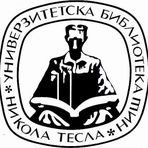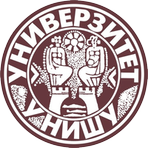Title
Ravnoteža ako faktor uspeha u vežbanju na gredi
Creator
Aleksić-Veljković, Aleksandra Z.
Copyright date
2016
Object Links
Select license
Autorstvo-Nekomercijalno 3.0 Srbija (CC BY-NC 3.0)
License description
Dozvoljavate umnožavanje, distribuciju i javno saopštavanje dela, i prerade, ako se navede ime autora na način odredjen od strane autora ili davaoca licence. Ova licenca ne dozvoljava komercijalnu upotrebu dela. Osnovni opis Licence: http://creativecommons.org/licenses/by-nc/3.0/rs/deed.sr_LATN Sadržaj ugovora u celini: http://creativecommons.org/licenses/by-nc/3.0/rs/legalcode.sr-Latn
Language
Serbian
Cobiss-ID
Theses Type
Doktorska disertacija
description
Datum odbrane: 04.07.2016.
Other responsibilities
mentor
Petković, Emilija 1975-
predsednik komisije
Herodek, Katarina
član komisije
Madić, Dejan 1966-
član komisije
Veličković, Saša 1970-
Academic Expertise
Društveno-humanističke nauke
University
Univerzitet u Nišu
Faculty
Fakultet sporta i fizičkog vaspitanja
Group
Katedra za individualne sportove
Alternative title
Balance as a factor of success in the exercise on the balance beam
Publisher
[А.Z. Aleksić-Veljković]
Format
148 listova
description
Physical education, Motor Learning, Sport
Abstract (en)
Achieving the best results in Women's Artistic Gymnastics depends on many factors. Тhe balance beam is one of the four apparatus in women's all-around competition, and it is necessary to identify the factors that are crucial in achieving the best results on this apparatus. A review of the literature showed that a small number of studies dealing with this problem, especially in the younger age categories of gymnasts.
The main aim of this research is to define the model of balance as a factor of success in practicing on the balance beam in young categories of gymnasts. The research included 47 gymnasts, participants of the "Laza Krstic and Marica Dželatović" competition, held in December 2012 in Novi Sad.
Data analysis was performed using SPSS statistical software version 20.0. For each variable are shown the main central and dispersion parameters, and the normality of distribution was tested using the Kolmogorov-Smirnov test. In line with the hypotheses we applied: Factor analysis - to determine the structure of the balance area; regression analysis - to predict the impact of the balance of the composition on the performance of the beam based on test results. There was a general and reliable testing of the dynamic balance, as well as a vertical jump, so that the tests are recommended for use in practice. Differences between means were tested by t-test.
Factor analysis extracted three factors: factor of specific balance, factor of general static and dynamic balance factor, explaining 60% of the total variability.
Pearson correlation coefficients were found statistically significant relationships between the variables of specific dynamic and static balance and variables of success on the beam, anthropometry and balance; anthropometry and vertical jump as well as balance and vertical jump, at the significance level of p <.01.
Regression analysis revealed a statistically significant correlation between sets of variables balance, anthropometry and vertical jump (systems of predictor variables) on the success of the beam (criterion variable).
By applying the t-test for small independent samples, it was found that there were statistically significant differences in tested variables, between categories I and II of gymnasts.
The scientific contribution of this research is defineing a theoretical model of the balance on the balance beam in young gymnasts, as well as determining the share of selected variables balance, anthropometry and explosive leg strength in young gymnasts. Based on this research it is possible to implement better methods of planning, programming and control of the training process on the beam, and also the data will be used by coaches to achieve better results in future competitions.
Authors Key words
Sportska gimnastika, Statička ravnoteža, dinamička ravnoteža, motoričke sposobnosti, vertikalni skok
Authors Key words
Gymnastics, static balance, dynamic balance, motor skills, vertical jump
Classification
796.413.12(043.3)
Subject
S 273
Type
Tekst
Abstract (en)
Achieving the best results in Women's Artistic Gymnastics depends on many factors. Тhe balance beam is one of the four apparatus in women's all-around competition, and it is necessary to identify the factors that are crucial in achieving the best results on this apparatus. A review of the literature showed that a small number of studies dealing with this problem, especially in the younger age categories of gymnasts.
The main aim of this research is to define the model of balance as a factor of success in practicing on the balance beam in young categories of gymnasts. The research included 47 gymnasts, participants of the "Laza Krstic and Marica Dželatović" competition, held in December 2012 in Novi Sad.
Data analysis was performed using SPSS statistical software version 20.0. For each variable are shown the main central and dispersion parameters, and the normality of distribution was tested using the Kolmogorov-Smirnov test. In line with the hypotheses we applied: Factor analysis - to determine the structure of the balance area; regression analysis - to predict the impact of the balance of the composition on the performance of the beam based on test results. There was a general and reliable testing of the dynamic balance, as well as a vertical jump, so that the tests are recommended for use in practice. Differences between means were tested by t-test.
Factor analysis extracted three factors: factor of specific balance, factor of general static and dynamic balance factor, explaining 60% of the total variability.
Pearson correlation coefficients were found statistically significant relationships between the variables of specific dynamic and static balance and variables of success on the beam, anthropometry and balance; anthropometry and vertical jump as well as balance and vertical jump, at the significance level of p <.01.
Regression analysis revealed a statistically significant correlation between sets of variables balance, anthropometry and vertical jump (systems of predictor variables) on the success of the beam (criterion variable).
By applying the t-test for small independent samples, it was found that there were statistically significant differences in tested variables, between categories I and II of gymnasts.
The scientific contribution of this research is defineing a theoretical model of the balance on the balance beam in young gymnasts, as well as determining the share of selected variables balance, anthropometry and explosive leg strength in young gymnasts. Based on this research it is possible to implement better methods of planning, programming and control of the training process on the beam, and also the data will be used by coaches to achieve better results in future competitions.
“Data exchange” service offers individual users metadata transfer in several different formats. Citation formats are offered for transfers in texts as for the transfer into internet pages. Citation formats include permanent links that guarantee access to cited sources. For use are commonly structured metadata schemes : Dublin Core xml and ETUB-MS xml, local adaptation of international ETD-MS scheme intended for use in academic documents.


